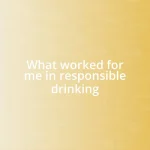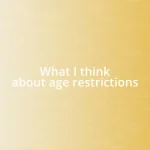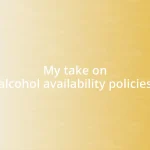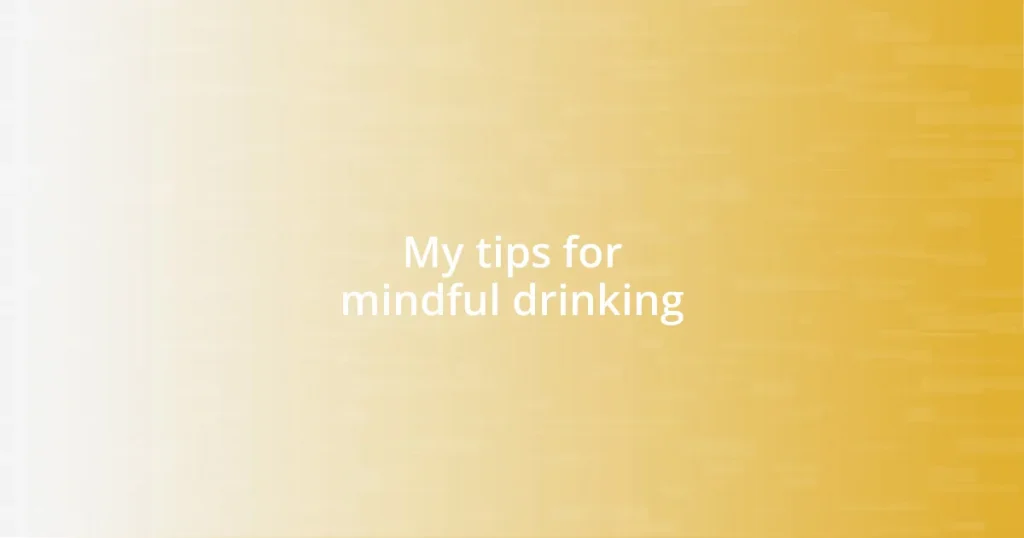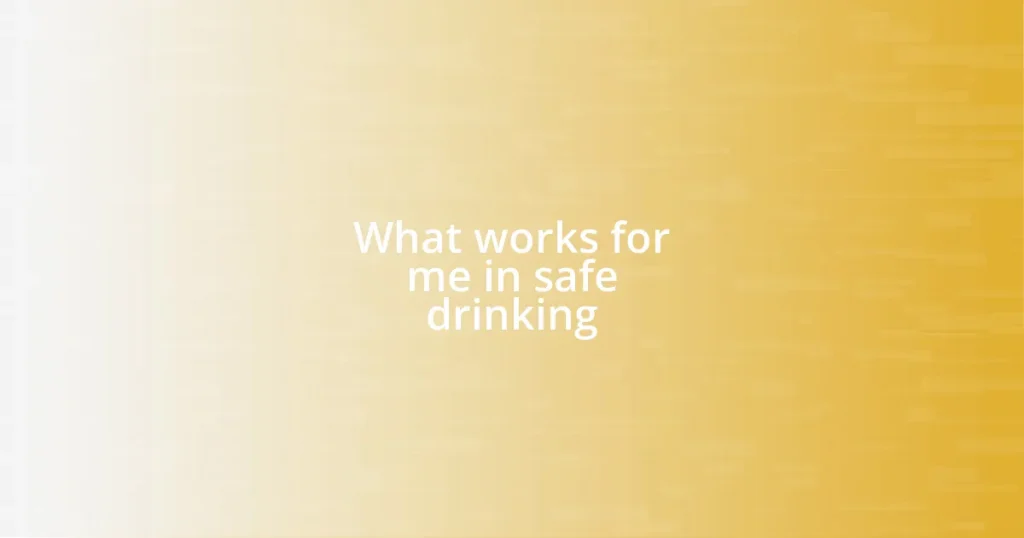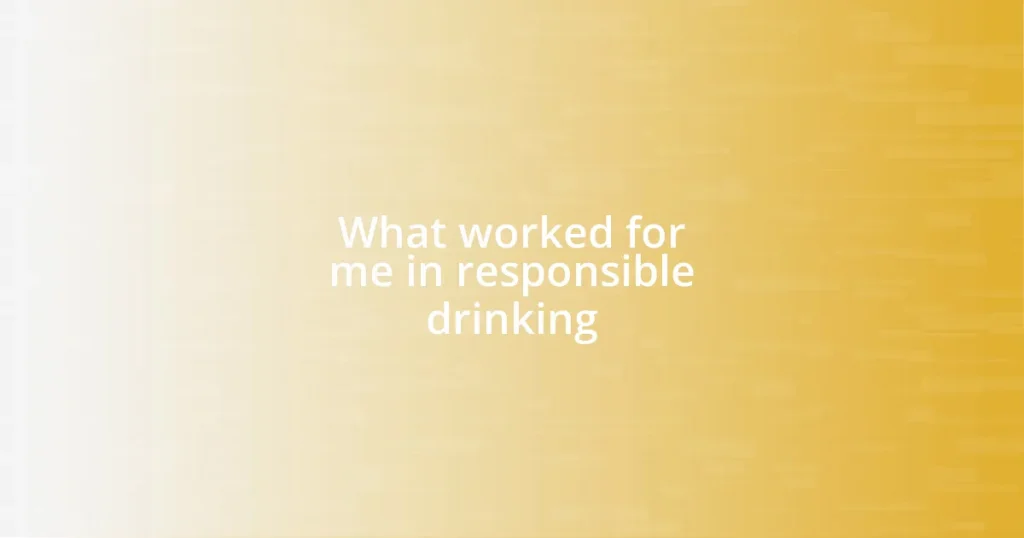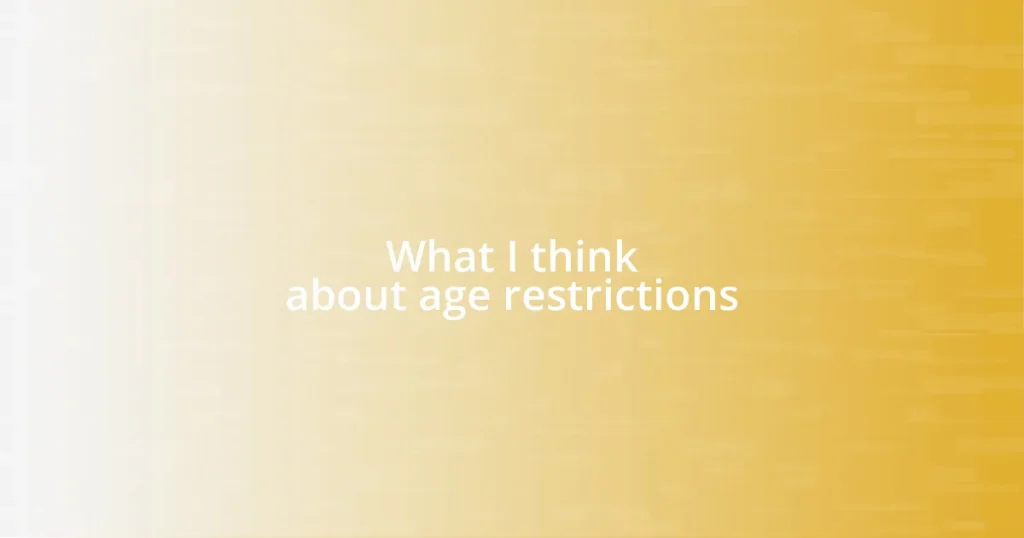Key takeaways:
- Mindful drinking involves being aware of the reasons behind alcohol consumption, enhancing the overall experience and mood.
- Setting drinking intentions promotes self-awareness by evaluating the context, quantity, alternatives, mindset, and environment associated with drinking.
- Establishing a supportive drinking environment fosters open dialogue about drinking choices, reducing social pressure and encouraging mindful interactions.
- Exploring non-alcoholic alternatives like mocktails and herbal teas can enrich social experiences without the downsides of traditional drinking.
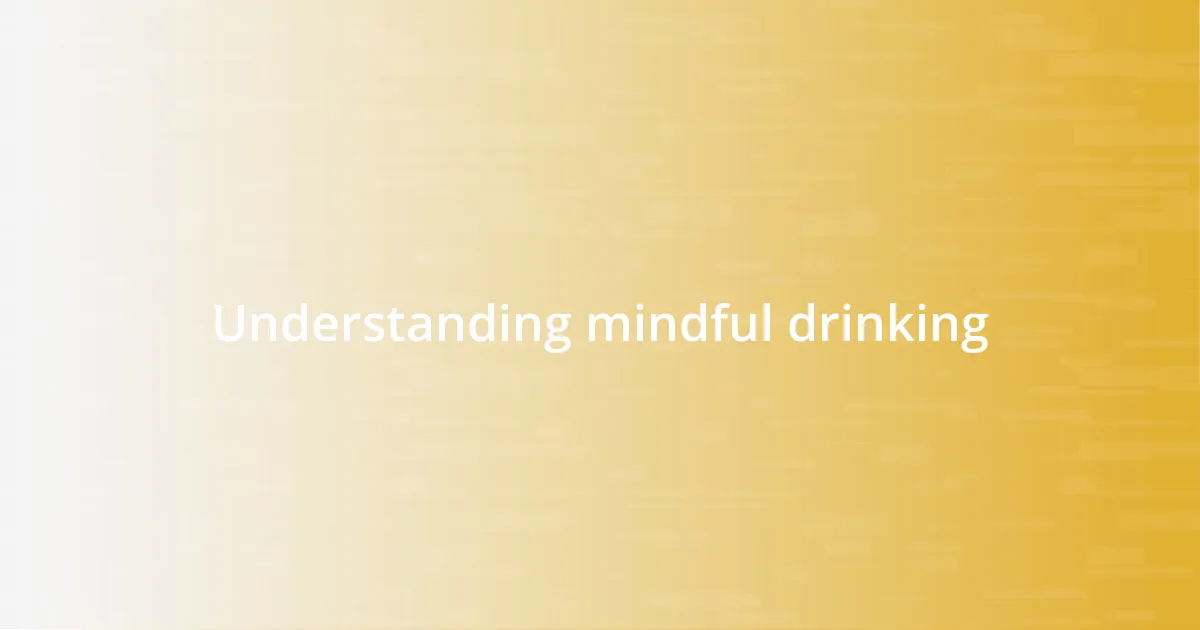
Understanding mindful drinking
Mindful drinking is all about being present with your choices surrounding alcohol. When I started paying attention to how I felt after a few drinks, I realized that it wasn’t just about the momentary enjoyment; it affected my mood and energy for days. Asking yourself why you’re drinking can transform your relationship with alcohol—are you celebrating, coping, or simply following the crowd?
Reflecting on my experiences, I discovered that savoring a drink slowly allowed me to appreciate the flavors and the company around me. It was a revelation—like tasting wine versus gulping it down without thought. Just think about it: when was the last time you truly enjoyed a drink without distraction?
Additionally, mindful drinking encourages us to differentiate between routine and intention. I often found myself reaching for a drink out of habit after a long day, but now I occasionally choose sparkling water instead. This shift not only made me more aware of my consumption but also helped me enjoy my evenings more fully, without the fog of too much alcohol. How might your evenings change if you chose your drinks with greater awareness?
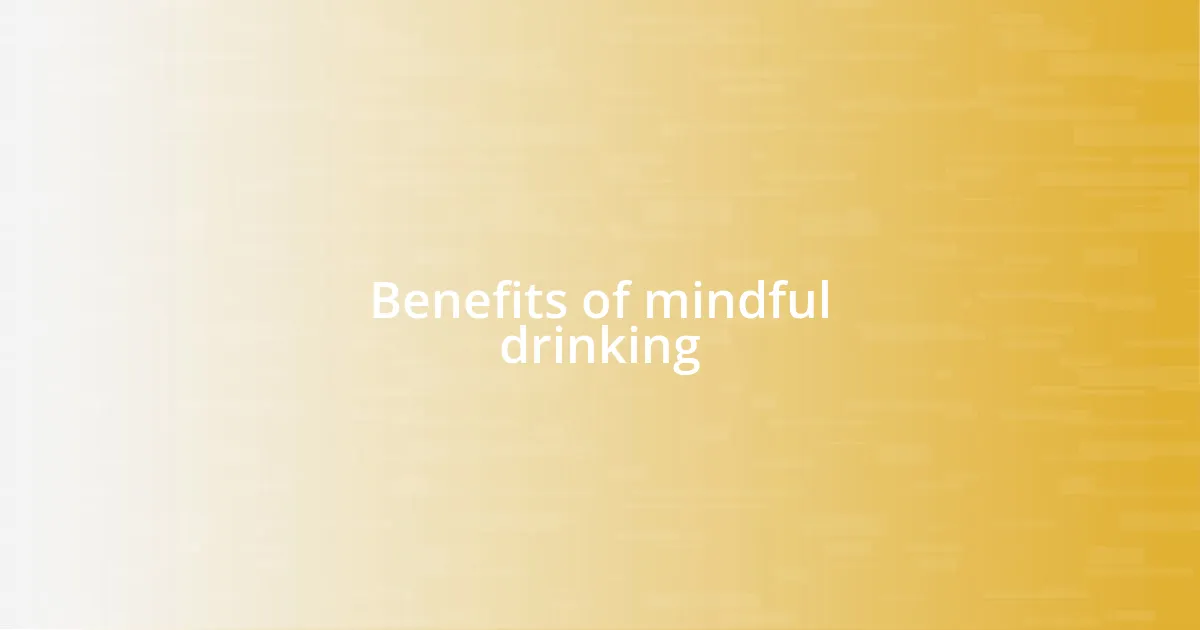
Benefits of mindful drinking
Mindful drinking offers a treasure trove of benefits that enhance our overall well-being. For me, practicing this approach led to greater clarity. I noticed that my focus sharpened and my mood stabilized. Instead of feeling sluggish after a night out, I could wake up refreshed and ready for the day. I remember one particular weekend where I made a conscious decision to enjoy just a glass of wine with my dinner, and I felt light and energized instead of weighted down.
Another significant benefit is the reduction of anxiety surrounding social situations. I’ve found that when I’m more mindful about my drinking choices, I can engage with others more authentically. There’s this funny moment I recall during a friend’s party when I opted for herbal tea instead of the usual cocktails. Surprisingly, I was more involved in conversations, and I felt a genuine connection with everyone without the haze of alcohol clouding my emotions. Have you ever noticed how being present can impact your ability to connect?
Finally, mindful drinking can substantially enhance our appreciation for the flavors and experiences surrounding a drink. I remember attending a craft beer tasting where I truly savored each sip. Each beer was unique, and it was delightful to note the subtleties in taste, aroma, and texture. Instead of a blurry memory of quantity, I walked away with a vivid recollection of the wonderful evening, appreciating every drop. This shift in perception encourages us to embrace quality over quantity, which is truly liberating.
| Traditional Drinking | Mindful Drinking |
|---|---|
| Habitual and automatic consumption | Intentional and thoughtful choices |
| Lack of awareness about effects | Increased awareness of feelings and consequences |
| Social pressure to drink | Authentic connections without reliance on alcohol |
| Quantity over quality | Focused on savoring flavors and experiences |
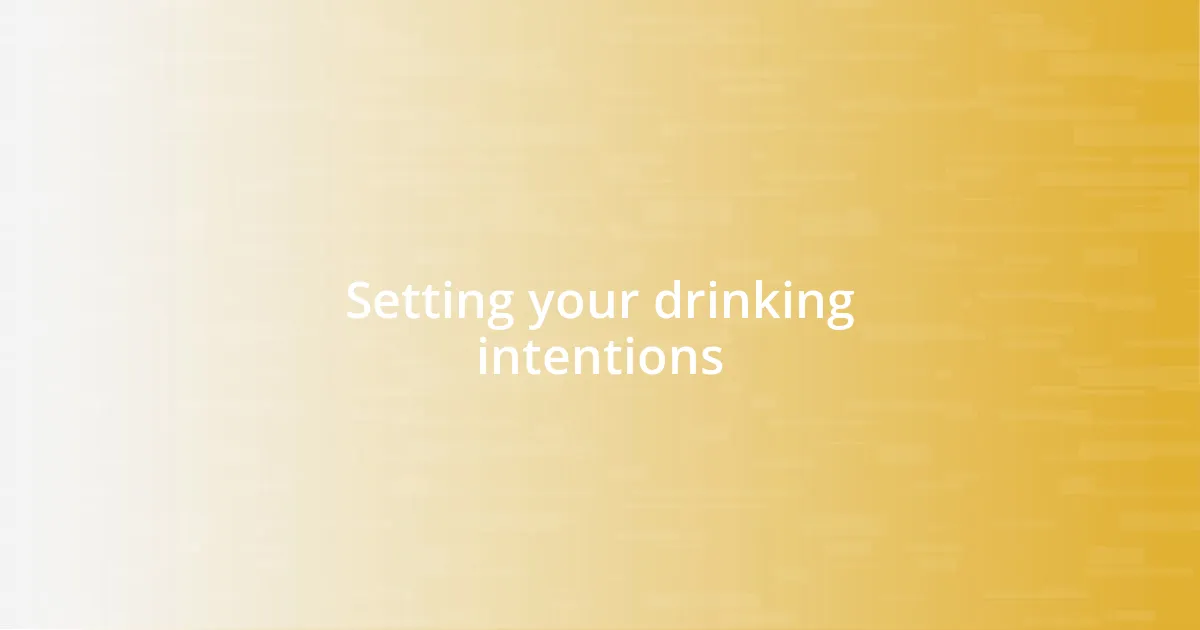
Setting your drinking intentions
Setting drinking intentions can be a powerful exercise in fostering self-awareness. I’ve found that taking a moment before reaching for a drink allows me to consider what I’m really hoping to achieve. Am I looking to unwind after a hectic day, or am I simply trying to fit in with others? This practice not only clarifies my motivations but also helps me make choices that align with my well-being.
When setting intentions, it can be helpful to consider the following:
- Occasion: Am I celebrating a special moment or just trying to fill time?
- Quantity: How many drinks do I plan to have, and does that serve my goals?
- Alternatives: Would a different beverage—like a mocktail or just sparkling water—meet my needs?
- Mindset: What mood am I in, and how could alcohol influence that?
- Environment: Is the setting conducive to mindful drinking, or is it more likely to lead to mindless excess?
Reflecting on these questions helps me approach drinking with intention rather than habit. I remember a time during a holiday gathering when I chose to enjoy one festive cocktail while savoring homemade appetizers. Instead of rushing through the night, I engaged in delightful conversations and genuinely soaked in the joyful atmosphere, leaving me with treasured memories rather than a foggy recollection.
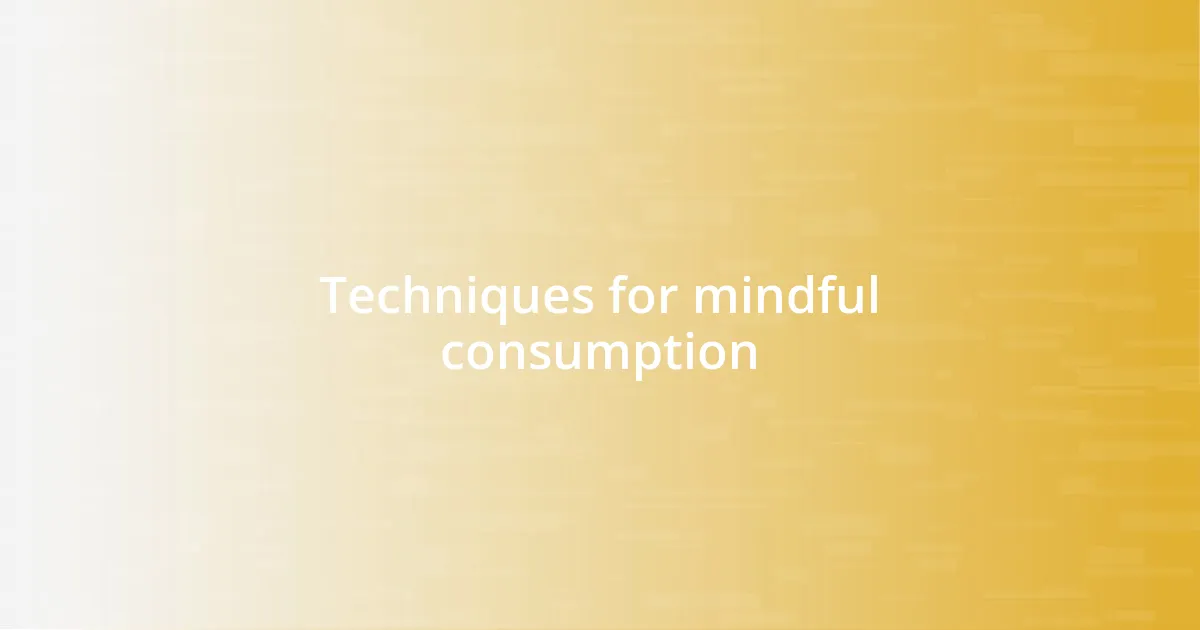
Techniques for mindful consumption
Being intentional about what I drink has transformed my experiences significantly. One technique I love is to pause between drinks—this simple act of stepping back has allowed me to assess how I’m feeling. Have you ever noticed that urge to keep sipping simply because other people are? Taking a moment to breathe can ground me in the present and remind me of my goals for the evening.
I often suggest people try to engage their senses. For instance, taking a moment to truly savor the drink—not just gulping it down—enhances the experience tremendously. I recall a lazy summer day when I made a homemade lemonade. Instead of just drinking it, I took the time to appreciate the tangy zest of the lemons and the sweetness of the sugar. That approach made it not just a refreshment but a special moment I cherished. Can you think of a drink that deserves that level of appreciation?
Another effective technique is to establish a hydration routine alongside any alcoholic beverages. I typically keep a glass of water close by, and every time I take a sip of my drink, I also sip water. This habit not only helps me stay hydrated but also encourages me to be mindful of my consumption pace. Reflecting on a recent gathering, this small change helped me enjoy the evening without feeling overwhelmed the next day. It’s amazing how a little planning can lead to such a big difference, isn’t it?
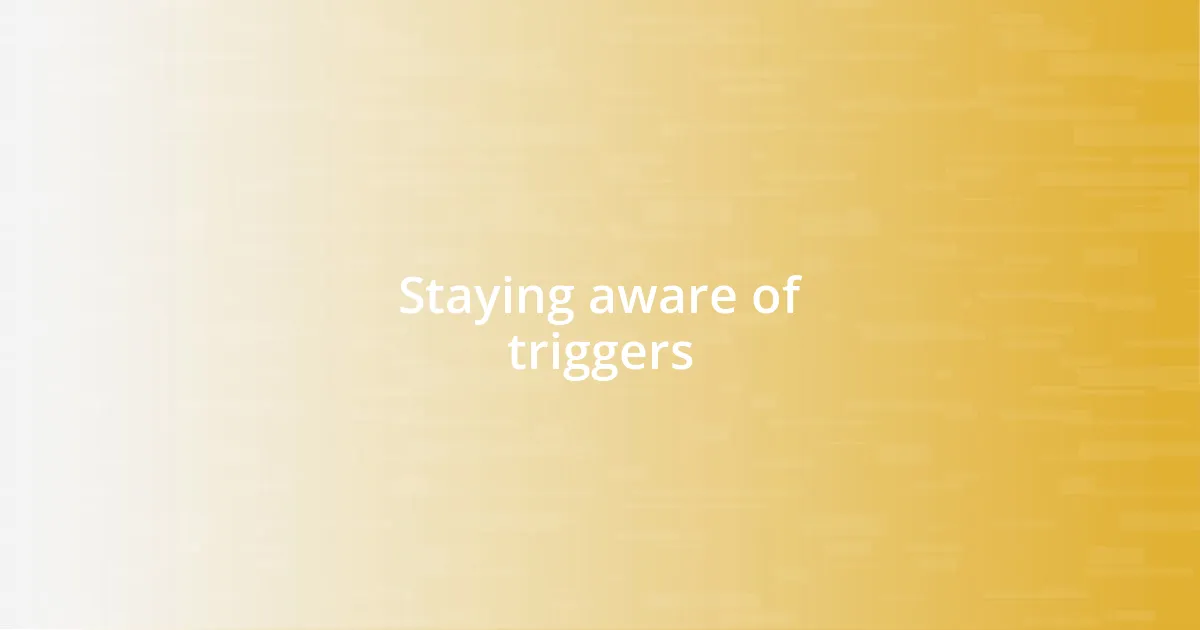
Staying aware of triggers
Understanding my triggers has been crucial on my journey to mindful drinking. I’ve found that specific environments or situations can spark an urge to drink more than I intend. For instance, I once noticed that every time I visited a certain bar with friends, I felt compelled to order another round, even when I didn’t really want one. Recognizing that atmosphere as a trigger allowed me to modify my plans, opting for gatherings in more relaxed settings where I could feel comfortable sticking to my intentions.
Additionally, emotional triggers play a significant role in my drinking choices. Reflecting on occasions when I felt stressed or anxious, I noticed that these emotions often led me to seek comfort in a drink. It’s fascinating how our emotions can influence our habits, isn’t it? Now, instead of reaching for a glass, I’ve started implementing healthier coping strategies, like a quick walk or even journaling those feelings. This shift has empowered me to break that automatic response to stress.
Being aware of social triggers is also important. There have been times when friends pressured me to keep up with their drinking pace, and it was tough to say no. But recognizing this pressure for what it is helped me empower myself. I started practicing assertive yet friendly ways to express my choices. For example, I’d say, “I’m good with my one drink tonight, but I’d love to share in the stories!” This little phrase not only affirmed my decision but also redirected the focus to the enjoyment of our time together, rather than the quantity of drinks consumed.
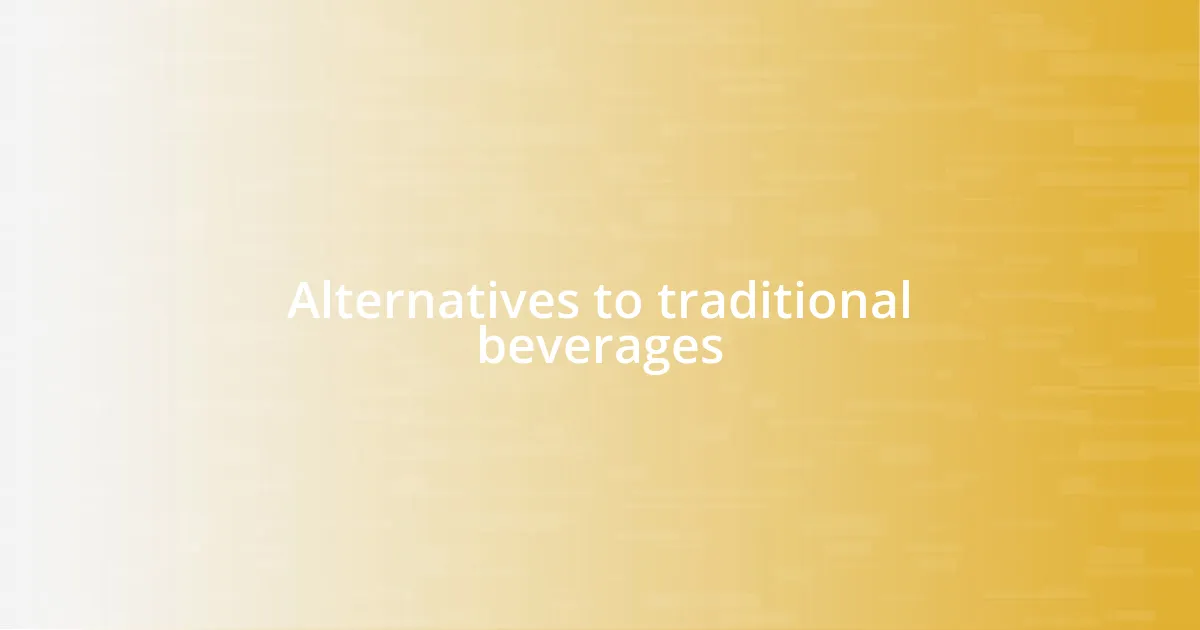
Alternatives to traditional beverages
Exploring alternatives to traditional beverages has opened new doors for my social experiences. I remember one evening at a friend’s birthday party, where the punch bowl was full of vibrant mocktails. The creativity sparked my curiosity. I tried a blend of sparkling water, fresh mint, and a splash of pomegranate juice. Not only did I feel refreshed, but there was also a feeling of festivity that made me forget I wasn’t having an alcoholic drink. Have you ever tried a mocktail that made you feel just as lively?
Herbal teas have also earned a special place in my routine, especially during evenings when I want to wind down. I often brew a calming chamomile or a zesty ginger tea, allowing the warmth to cradle me like a cozy blanket. This shift not only quenches my thirst but also helps me relax and reflect, turning an ordinary moment into a mindful ritual. Do you have a favorite tea that brings you comfort?
Lastly, carbonated alternatives are worth considering. I still recall a time when I kept a selection of flavored sparkling waters on hand during a gathering. As guests mingled, I noticed them trying the various options and sharing their favorites. The atmosphere was lively, and it paved the way for meaningful conversations. It felt great to offer something that everyone enjoyed, without the pressure of traditional drinks. Have you experienced the joy of sharing unique beverages that spark discussions?
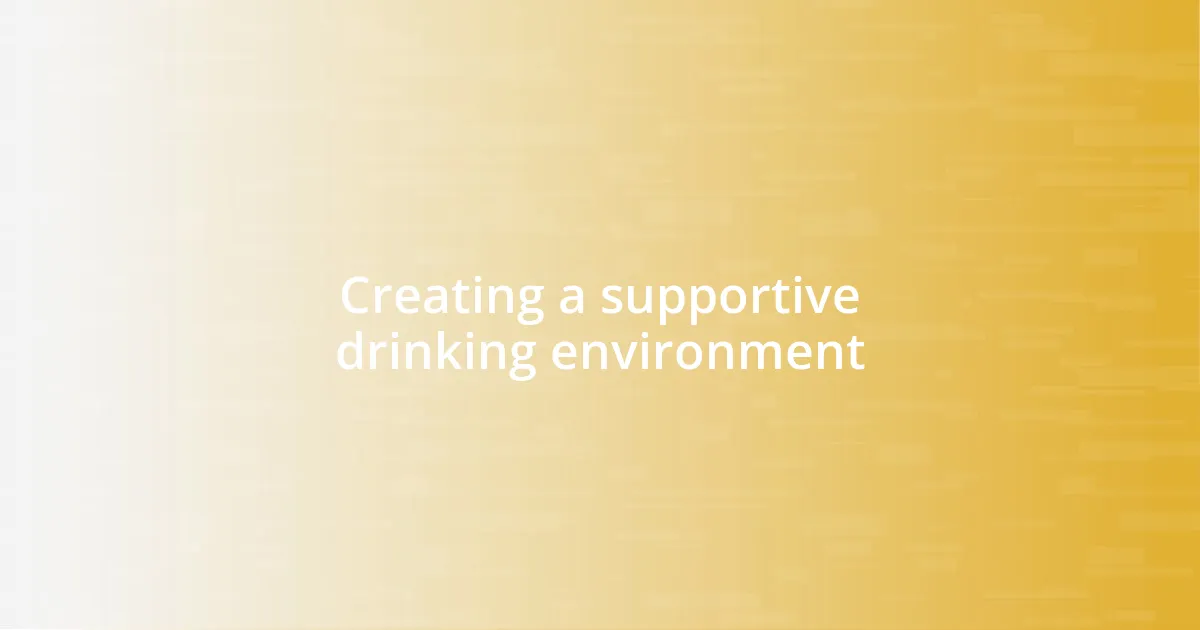
Creating a supportive drinking environment
Creating a supportive drinking environment is all about choosing the right atmosphere and company. I remember a gathering where the host set up a cozy, inviting space with soft lighting and comfortable seating. It made such a difference; instead of rushing to the bar for drinks, we engaged in deeper conversations and shared stories, which truly felt like a celebration of friendship rather than just consumption. Isn’t it amazing how a thoughtful setting can shift our focus from quantity to quality?
Additionally, encouraging open dialogue about drinking preferences can make a world of difference. One time, a friend opened up about her intentions to cut back on alcohol, and it instantly created a ripple effect. Others started sharing their own experiences and choices, fostering an environment where it was completely normal to opt for water or a mocktail without judgment. It felt liberating to have a space where we could be honest about our choices. Have you ever been surprised by how supportive friends can be when you open up about your drinking decisions?
Finally, incorporating fun, interactive activities can encourage a mindful approach to drinking without putting pressure on anyone. I once attended a themed trivia night where the drinks were secondary to the games. The focus was on collaboration and laughter, with every wrong answer igniting spirited discussions and friendly banter. It struck me how, in that lively atmosphere, no one missed the drinks as we were too engrossed in the fun. Have you experienced how engaging activities can invite joy and togetherness while minimizing the focus on drinking?

